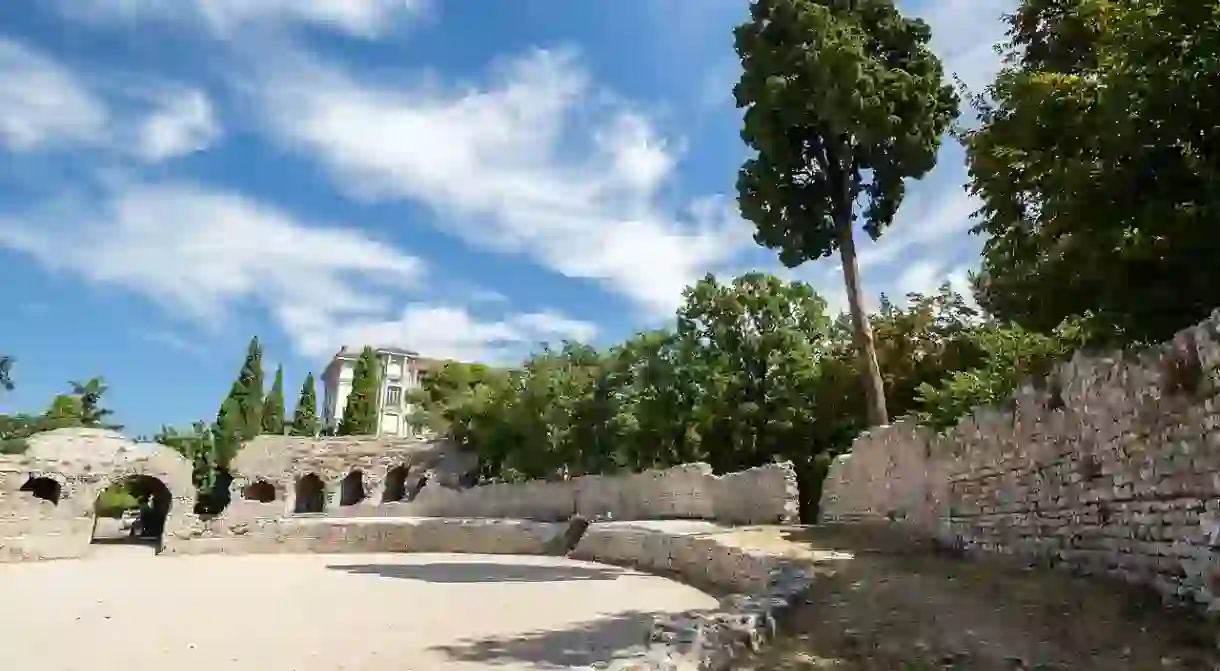A Brief History of Cimiez in Nice, France

Cimiez is a neighbourhood in Nice containing the ruins of the Roman town Cemenelum. Its smart tree-lined streets also contain the Cimiez Monastery dating back to the 16th century, the Matisse museum and Cimiez cemetery, where several famous French artists – including Henri Matisse – are buried. It’s a good (uphill) walk from the railway station in the centre of town, but well worth a visit and a lovely way to explore the history of the area by marvelling at its beautiful Belle Époque architecture.
The Roman city of Cemenelum was founded in the 1st century AD as a staging post for Roman troops in the Alpes Maritime region and it later became the regional capital. The amphitheatre is not as big or as well-preserved as those found in Arles or Nimes, but along with the Roman baths and arena, visitors can gain a sense of wonder into Roman life by paying a visit to the archaeological museum (Musée Archéologique de Nice-Cimiez) on Avenue des Arènes. Cemenelum existed as a separate city until it gradually became part of Nice itself.

Walk through the park Arènes (a great place to picnic), and a little further down the Avenue is the lovely Musée Matisse, which houses much of the artist’s work, as well as his personal belongings, and provides a comprehensive retrospective on the man and his art. Like many of the surrounding buildings, this large residential villa was built at the turn of the century when wealthy European families began to spend winters on the French Riviera.
The grand Boulevard de Cimiez was laid out by architects in the 1880s at a time when large expensive hotels became fashionable for the rich and famous. Nowhere is this more in evidence than in the Grand Hotel, built in 1908, the Majestic Hotel (which was once Nice’s biggest and smartest) and Queen Victoria’s favourite, The Excelsior Régina Palace.

The Palace came to characterise “La Belle Époque”, the period in French history of social, political and economic progress before World War One. However, it became a military hospital during the war and later, like many of the grand hotels in the neighbourhood, it went into decline.

Fewer guests arrived during The Great Depression and during the 1930s people began to want to holiday beside the sea, moving to newer hotels that were being built along the promenade. The Palace was turned into apartments in the 1930s (where Matisse himself stayed throughout the early years of World War Two, painting the ceiling from his bed with a paint brush attached to a long pole).
At the eastern side of Park Arènes is the Cimiez Monastery, which has been home to Franciscan monks since the 16th century. The monastery gardens are a wonderful place to look out at the world and contemplate life or lunch.
What’s more, Matisse and fellow painter, Raoul Dufy, are buried on opposite sides of Cimiez Cemetery, amongst Russian and British diplomats and the 1937 Nobel Prize winner for Literature, Roger Martin du Gard.
Up until recently, the Roman remains were used to host the annual jazz festival, until it outgrew the venue and was moved into town. Nowadays, the neighbourhood is mostly residential but remains very chic; a tribute to its artistic and cultural legacy.













